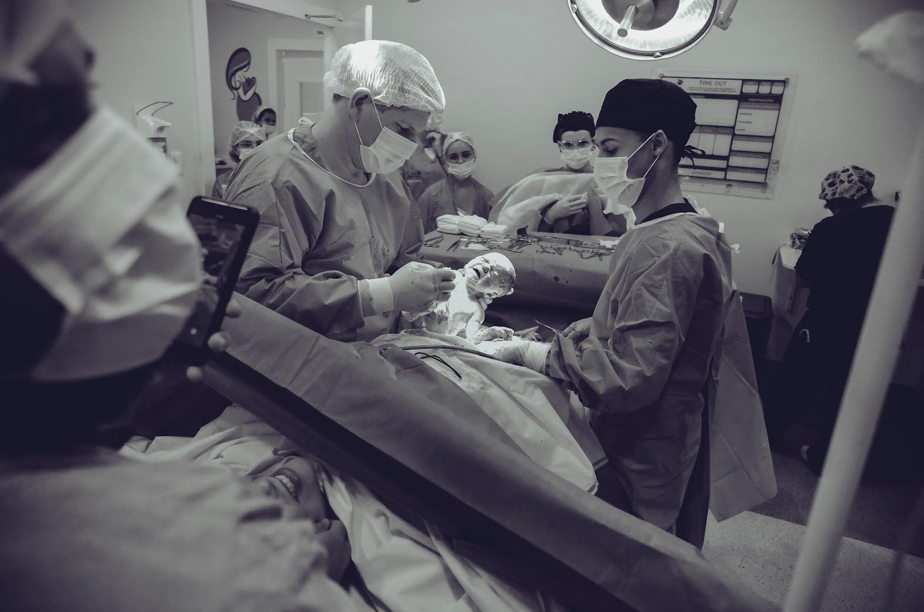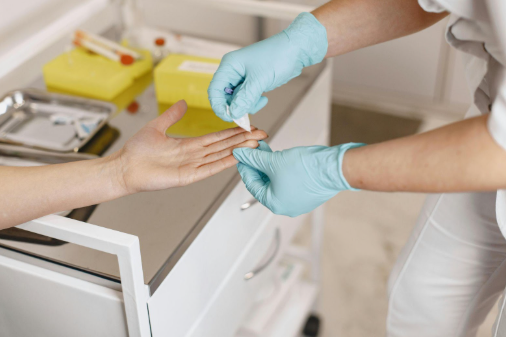Labor and Delivery - Understanding Facts and the Process
Labor and Delivery - Understanding Facts and the Process

The process of labor and delivery can be a daunting and overwhelming experience for many expecting mothers. It is important to understand the facts and processes involved to help prepare for a safe and healthy birth. From the early signs of labor to the delivery of the baby and the placenta, there are many stages to be aware of. In this article, we will discuss the facts and process of labor and delivery.
Early Labor
Early labor, also known as the latent phase of labor, is an indicative stage of labor that occurs before active labor begins. During this phase, the cervix begins to thin out and dilate, and the baby starts to move down the birth canal. The early labor phase can last anywhere from a few hours to a few days and varies from person to person. Here are some key characteristics of early labor:
Contractions
The most common sign of early labor is contractions. These contractions are usually mild and irregular at first and may feel like menstrual cramps or a dull backache. As labor progresses, the contractions will become more frequent and regular, and may feel stronger and more intense.
Cervical Changes
During early labor, the cervix begins to thin out and dilate. This can be monitored by a healthcare provider through vaginal exams. In early labor, the cervix may only be a few centimeters dilated and effaced (thinned out), but as labor progresses, it will continue to open up and thin out more.
Emotional Changes
Early labor can be a time of excitement and anticipation, but it can also be a time of anxiety and uncertainty. Many women experience a range of emotions during this phase including excitement, nervousness, and fear. It is important to have a support system in place during early labor to help manage these emotions.
Physical Changes
In addition to contractions and cervical changes, women may experience other physical changes during early labor. These can include back pain, nausea, diarrhea, and vaginal discharge. It is important to stay hydrated and rest as much as possible during this phase.
Preparation
Early labor is a good time to prepare for the upcoming birth. This can include packing a hospital bag, reviewing the birth plan with a healthcare provider, and practicing relaxation techniques such as deep breathing or visualization.
Active Labor
Active labor is the second stage of labor that follows the early labor phase and is characterized by regular, strong contractions that help the cervix to fully dilate and prepare for childbirth. During active labor, the cervix typically dilates from 6 to 10 centimeters, and the baby moves down the birth canal. Here are some key characteristics of active labor:
Contractions
During active labor, contractions become more frequent, longer, and stronger than during early labor. They typically last for around 45 to 60 seconds and are spaced about 3 to 5 minutes apart. These contractions are what help to fully dilate the cervix and prepare for childbirth.
Cervical changes
During active labor, the cervix fully dilated from 6 to 10 centimeters, which allows the baby's head to move down the birth canal. This can be monitored by a healthcare provider through vaginal exams. As the cervix dilates, the baby may move down further, putting pressure on the mother's pelvis.
Emotional Changes
As labor intensifies, women may experience a range of emotions, including excitement, fear, and exhaustion. It is important to have a support system in place throughout this process to help manage these emotions and provide physical and emotional support.
Physical Changes
During active labor, women may experience intense pressure in their pelvic area, as well as back pain, leg cramps, and fatigue. It is important to stay hydrated, rest as much as possible between contractions, and use relaxation techniques such as breathing or visualization to manage pain and discomfort.
Medical Interventions
Depending on the woman's individual circumstances, medical interventions may be necessary during active labor to help manage pain or ensure the safety of the mother and baby. These interventions can include pain medication, epidurals, or assisted delivery methods such as forceps or vacuum extraction.
Baby’s Birth
This stage begins once the cervix is fully dilated, and the baby is ready to be born. It ends once the baby has been born and the placenta has been delivered.
Here are some key characteristics of the third stage of labor:
Pushing
Once the cervix is fully dilated, the mother will begin to feel the urge to push. Pushing helps the baby move down the birth canal and out of the mother's body. The mother will be coached on how to push effectively to help the baby be born.
Birth
Once the baby crowns, (i.e., the head emerges from the mother's body) the healthcare provider will suction the baby's mouth and nose to clear any fluid or mucus. The rest of the baby's body will then be delivered. The healthcare provider will place the baby on the mother's chest for skin-to-skin contact.
Umbilical Cord
The umbilical cord, which connects the baby to the placenta, will be clamped and cut once the baby is born. The baby will continue to receive oxygen through their lungs, and the placenta will continue to provide nutrients and oxygen to the baby until it is delivered.
Recovery
After the baby and placenta are delivered, the healthcare provider will examine the mother to ensure that there are no complications or tears. The mother may experience continued contractions as her uterus contracts to reduce bleeding. Pain medication may be administered to help manage pain.
It is important to note that the length of the third stage of labor can vary but typically lasts around 5 to 30 minutes. It is important to communicate with a healthcare provider and seek medical attention if there are any concerns or questions about the third stage of labor and delivery.
Placenta Delivery
The last phase of labor and delivery is the delivery of the placenta, which is also known as the afterbirth. This phase occurs after the baby has been born and typically takes between 5 and 30 minutes. Here are some key characteristics of the last phase of labor and delivery:
Contractions
After the baby is born, the mother will continue to experience contractions. These contractions help to separate the placenta from the uterine wall and move it towards the birth canal.
Pushing
The mother may be asked to push again to help deliver the placenta. The healthcare provider may also gently pull on the umbilical cord to help the placenta detach and come out.
Examination
Once the placenta is delivered, the healthcare provider will examine it to ensure that it is intact and complete. This is important to ensure that there are no retained pieces of the placenta inside the uterus.
Recovery
After the placenta is delivered, the healthcare provider will continue to monitor the mother for any signs of complications such as excessive bleeding. The mother may be given medication to help reduce the risk of bleeding and will typically be encouraged to rest and recover.
It is important to note that complications can also occur during the delivery of the placenta, such as the placenta not fully detaching or not being delivered completely. This can lead to complications such as excessive bleeding or infection. It is important to seek medical attention if there are any concerns or questions about the delivery of the placenta.
Caesarian Births
Since childbirth is a complex and unpredictable process, despite the best efforts of healthcare professionals, things don't always go as planned. At any point during labor and delivery, complications may arise that require an emergency cesarean section (C-section) to be performed. An emergency C-section may be required if the baby is in distress, the mother is experiencing excessive bleeding, or if the labor is not progressing as it should.
In some cases, a C-section may be planned in advance. Examples of such situations include if the mother has a pre-existing medical condition that may complicate vaginal delivery, or if the baby is in a breech position. A C-section may also be recommended to mothers if the placenta is covering the cervix.
As an expecting mother, it is important to have a strong support system during labor and delivery. At Bayou Bend Health System, we understand the importance of providing compassionate and comprehensive care to mothers and their families during this special time. Our experienced team of healthcare providers is committed to ensuring a safe and healthy delivery for you and your baby. Contact us today to learn more about our services and how we can support you during this exciting journey.



